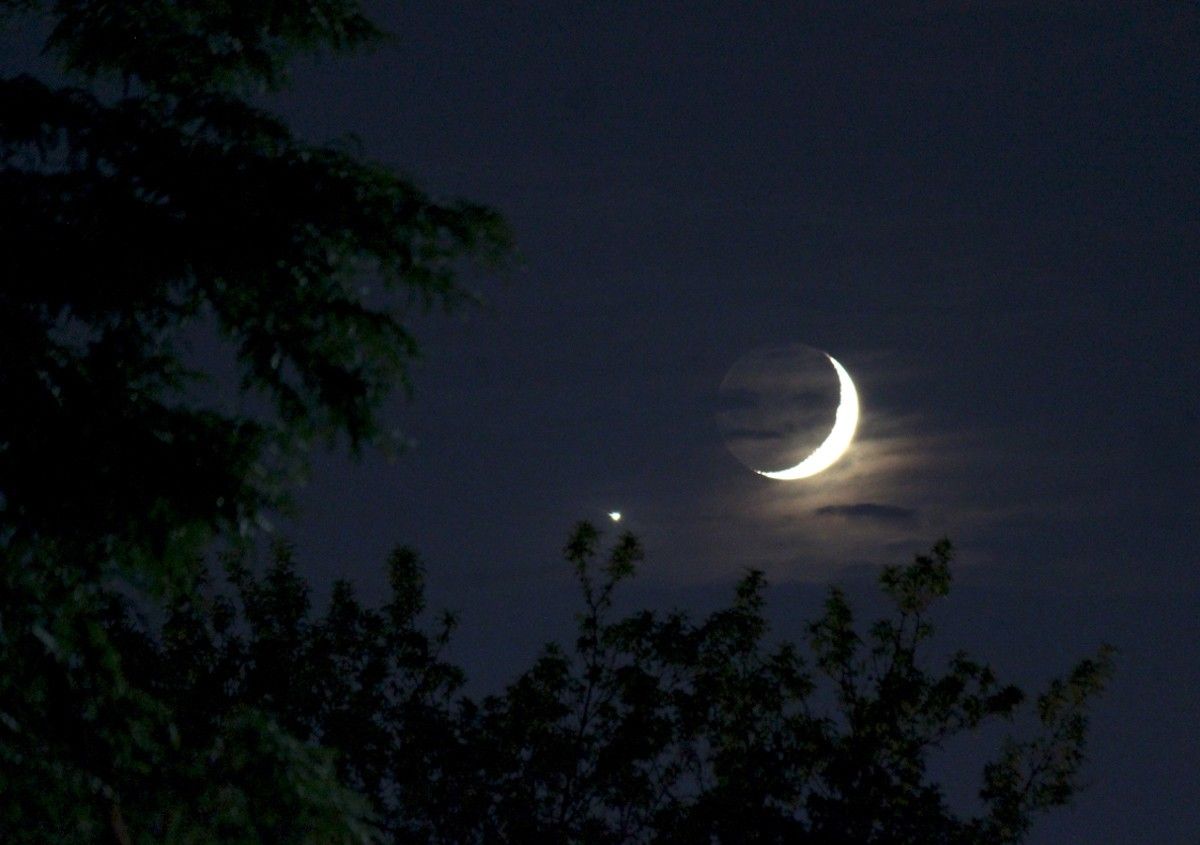
by Dave Prosper of the Astronomical Society of the Pacific
Do you think you have spotted a UFO? We have some tips to help you identify that unidentified light in the sky below. Many folks have spotted something in the sky that may not be able to easily explain at first, but careful consideration and investigation will often help you to both identify that mystery light and help you become a better stargazer.
Venus is one of the most confused objects in the sky, especially when it is low to the horizon, as it will be later this month. Sirius and Jupiter are also often reported as UFOs, as well as Mercury. When bright planets are in alignment near the horizon they can appear to be a formation of "strange lights"!

Other "UFOs" can be rocket launches, comets, military jets, weather balloons, sounding rockets, satellites, meteors and fireballs, experimental craft (if you are lucky) and odd clouds (such as lenticular clouds) and be confused, as well as artifacts from photographs that are actually lens flare or aberration. Remote control aircraft can also be confused for a UFO; in fact some models explicitly look like "flying saucers" just to make things tricky!
If you have a good description of the object, as well as the date and time, you may want to try using a planetarium software such as Stellarium to plot the sky at the indicated time and date.
We have a few more resources and tips courtesy of the fine folks at the North Colorado Astronomical Society:
If you saw the mystery object long after sunset it is less likely that the sun would have illuminated a weather balloon or unlit aircraft.
Contact your local astronomy club and have the following information handy to help the more experienced observers identify the object:
- Date and time of day.
- How long did you observe this object? How long did it take to travel along its path?
- Any apparent drift of the object? If so, what direction? What speed did it travel? (eg, 10 min to go from straight up to 30degrees from vertical)?
- How did the brightness compare to the brightest stars (if in twilight)? Did its brightness vary?
- Where were you when you saw this object?

If you're an amateur astronomer, you are probably asked about aliens and UFOs quite a bit. Many of us have been observing Venus when a call or message comes through, asking us, "What is that bright light in the southwest?" Or folks see something unusual and ask you what the strange light in the sky was. It is easy to be dismissive with these reports, but it it very important to be respectful. In fact, if you have looked at the sky for any length of time you too have likely seen things that you couldn't readily identify, at least not right away. Use this opportunity to turn their curiosity into a new hobby!
So, how do you identify UFOs when asked? Be polite and patient. If the "UFO" is visible and the person inquiring is there in person, you can turn your telescope on the object to reveal the truth! The star Fomalhaut, visible in the Northern Hemisphere low in the south for only a couple of months out of the year in an otherwise sparse section of the sky, can be reported as a UFO as well. This often does not happen, of course. Be aware of recent meteor showers, as well as common phenomena in your area. If you're not sure, it's likely someone in your club can help.
With these tips, you are now well-armed to help turn a report of an UFO into an IFO (Identified Flying Object!) Your visitor may be disappointed that you didn't see any alien space ships, but their knowledge of the wonders of the night sky will be magnificently increased!


























